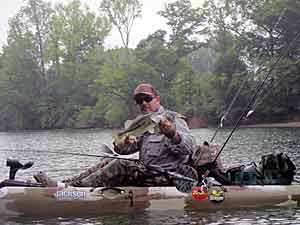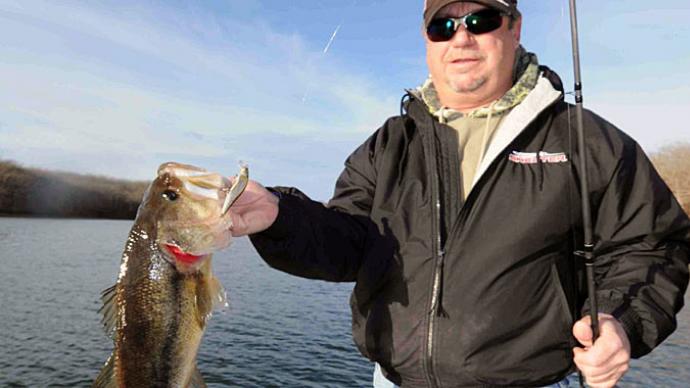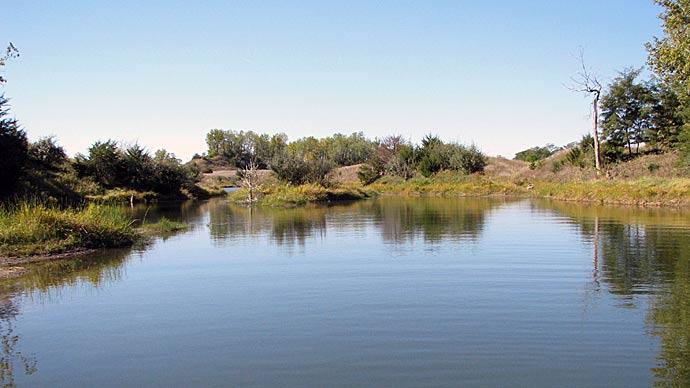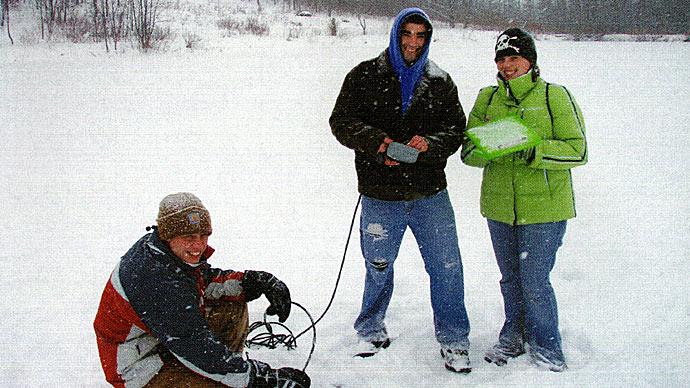(Note - The POSS BOSS Field Advisory Staff recognizes the benefits of aeration and often recommends aeration systems. The following, however, urges caution when aerating old impoundments.)

If you must aerate an old pond in which the bottom is covered with deep sediment which has become anaerobic, or devoid of oxygen, exercise caution. Quite by mistake, you might start a devastating fish-kill.
Fish ponds are not the only impoundments that carry the potential for trouble. Most any reservoir -- livestock tank, dugout, irrigation canal or dairy lagoon -- could have a basin full of anaerobic matter. Small ponds covering one surface acre or less can be especially vulnerable.
In the case of Jim Troglio in Chillicothe, IL, he had a 2.5-acre pond in a so-called "timber pond" in an oak tree forest. He installed an electric aerator and three days later, found 80 fish floating including catfish that weighed 10 pounds apiece.
To tell if you have a potentially dangerous situation for your fish, stir up the bottom sediment and smell the rising bubbles. Be alert for a distinct sulfur odor.
The offensive odor is hydrogen sulfide, or sometimes methane, both products of anaerobic bacteria which develops as a byproduct when vegetation and other living matter decays. Both gases can be deadly to fish and people, so be careful.
Here's what you can do about it: Whether the pond is shallow or deep, place an air diffuser stone in a plastic five-gallon bucket. Wire the handle to the air line. Make sure the air stone stays in the bottom. This is important.
Lower the stone only to the depth where you no longer get the sulfur smell. If the bubbles produce a strong sulfur smell, use plastic soft drink bottles for floats and raise the stone until the bubbles smell okay.
At this point, you can be sure the water below is saturated with hydrogen sulfide and other poisonous gases. Fish can not survive in that environment, as there is virtually no oxygen at that level in the water column.
Here's the key: If you lower the air stone too deep, you may bring up too much poisonous gas too quickly, and fish will die.
The air stone will aerate the water to the sides and above it. The rising bubbles will carry a certain amount of hydrogen sulfide gas to the surface, but not enough to harm the fish living in the top water.
Very gradually, over a period of weeks, at a rate of 1 foot at a time, you may safely lower the air diffuser stone and bucket, and the rising bubbles will cleanse the water around it. Be sure to check the smell of the bubbles. If you get into strong smelly water, pull the stone up a bit.
The poor chap with the fish die off in Illinois said, where the bubbles reached the surface, the sulfur smell was overpowering.
Eventually, as you work deeper into the water column, the stone and bucket will come to rest on the bottom. At this point, the rising bubbles will serve to pull water from the bottom layer of water, but not the sediment. This is prevented by the bucket.
The anaerobic sediment is laced with bacteria producing poisonous gases. The anaerobic bacteria cannot live in an oxygen environment, so the anaerobic bacteria closest to the surface of the sediment will die -- and be eaten by the aerobic bacteria which have been happily growing in the oxygen-rich, aerated water.
Aerobic bacteria are the good guys. They breathe oxygen like us and exhale C02 like us. They have a tremendous appetite, eating anything organic, and quickly. Given oxygen from the diffuser stone, the aerobic bacteria begin to eat the organic sedirnent at the bottom of the pond, and will continue to eat it as long as they are given oxygen.
Aerobic bacteria also eat the dead anaerobic bacteria, eventually eliminating all the anaerobic bacteria in the pond and making the water fresh from top to bottom.
Reprinted with permission from Pond Boss Magazine



